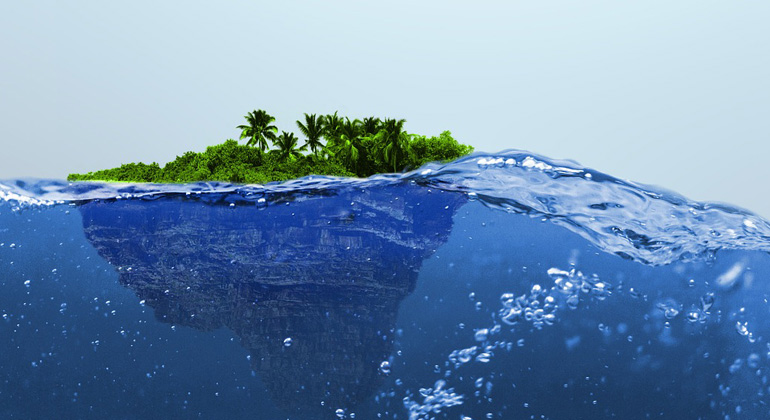Sea level could rise more than 1 metre by 2100 if emission targets are not met, reveals survey amongst 100 experts
Global mean sea-level rise could exceed 1 metres by 2100 and 5 metres by 2300 with unchecked emissions, a survey among 100 leading international experts finds. The risk assessment is based on the increasing body of knowledge of the systems involved – while the scientists highlight the remaining uncertainties, they say it is clear now that previous sea-level rise estimates have been too low.
The risk assessment is based on the increasing body of knowledge of the systems involved – while the scientists highlight the remaining uncertainties, they say it is clear now that previous sea-level rise estimates have been too low. The study led by scientists of Nanyang Technological University, Singapore (NTU Singapore) appears today in the Nature partner journal Climate and Atmospheric Science.
“What we do today, within a few decades, will determine the rise of sea level for many centuries. The new analysis shows this more clearly than ever before,” says co-author Stefan Rahmstorf from the Potsdam Institute for Climate Impact Research (PIK) in Germany. “But this is also good news: when it comes to greenhouse gas emissions, we have it in our own hands how much we increase the risks for millions of people at the world’s coasts, from Hamburg to Shanghai and from Mumbai to New York.”
“The good news: we have it in our own hands”
In a scenario where global warming is limited to 2 degree Celsius above pre-industrial levels (which would be in agreement with the international Paris climate accord), the experts estimated a rise of 0.5 metres by 2100 and 0.5 to 2 metres by 2300. In a high-emissions scenario with 4.5 degree Celsius of warming, the experts estimated a larger rise of 0.6 to 1.3 metres by 2100 and 1.7 to 5.6 metres by 2300.
Professor Benjamin Horton, Acting Chair of NTU’s Asian School of the Environment, who led the new survey, says that sea-level rise projections and knowledge of their uncertainties are vital to make informed mitigation and adaptation decisions. “The complexity of sea-level projections, and the sheer amount of relevant scientific publications, make it difficult for policy-makers to get an overview of the state of the science,” he explains. “To obtain this overview, it is useful to survey leading experts on the expected sea-level rise, which provides a broader picture of future scenarios and informs policymakers so they can prepare necessary measures.”
Greenland and Antarctic ice sheets the greatest sources of uncertainty
The Greenland and Antarctic ice sheets have been identified by the surveyed experts as the greatest sources of uncertainty. These ice sheets are an important indicator of climate change and a driver of sea-level rise. Satellite-based measurements show the ice sheets are melting at an accelerating rate. However, the surveyed experts also remarked that the magnitude and impacts of sea-level rise can be limited through successful reduction of emissions.
The projections exceed previous estimates by the International Panel on Climate Change (IPCC). The international study was a collaboration of researchers from NTU Singapore, The University of Hong Kong, Maynooth University (Ireland), Durham University (UK), Rowan University and Tufts University (USA), and the Potsdam Institute for Climate Impact Research (Germany).
The 106 experts who participated in the new survey were chosen objectively by identifying a pool of the most active publishers of scientific sea-level studies (at least six published papers in peer-reviewed journals since 2014) from a leading publication database.
- Article: Horton, Benjamin, et al (2020): Estimating global mean sea-level rise and its uncertainties by 2100 and 2300 from an expert survey. npj Climate and Atmospheric Science [DOI:10.1038/s41612-020-0121-5]
- Weblink to NTU Singapore press release








